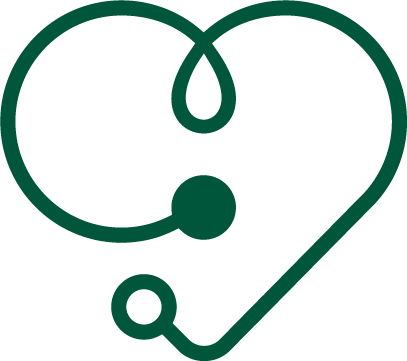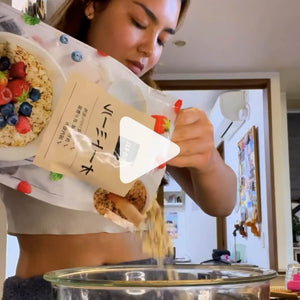If you suffer from Irritable Bowel Syndrome (IBS), you know the misery an upset stomach can bring. Bloating, cramps, unpredictable bathroom habits – it can make daily life frustrating and uncomfortable. While there’s no single cure for IBS, the good news is that what you eat can make a big difference. Many people find that certain IBS trigger foods regularly worsen their symptoms.
Let’s dig into the common culprits so you can start finding dietary changes that help you feel your best.
Common IBS Trigger Foods
While everyone’s triggers are different, some usual suspects tend to make IBS symptoms worse. Here are some major categories to be aware of:
1. High-FODMAP foods
Definition of FODMAPs: These are short-chain carbohydrates that your gut might struggle to digest properly.
How FODMAPs affect the gut: They can draw water into your intestines and ferment, leading to bloating, gas, and changes in bowel habits.
Examples of high-FODMAP foods:
- Fruits (apples, pears, watermelon, etc.)
- Vegetables (onions, garlic, cauliflower, etc.)
- Dairy products containing lactose
- Wheat and rye
- Legumes (beans, lentils, soybeans)
- High-fructose corn syrup
- Sugar alcohols (sorbitol, xylitol, maltitol)
Low-FODMAP Alternatives: Don’t worry, there are tons of delicious options! Examples include berries, oats, lactose-free dairy, and rice.
Important Note: Even if a food is high-FODMAP, it doesn’t mean you have to avoid it completely. Often, you can find a serving size that works for you.
2. Insoluble Fibre
Definition of insoluble fibre: This type of fibre doesn’t dissolve in water, so it adds bulk to your stool and speeds things through your gut.
How insoluble fibre affects IBS symptoms: While beneficial for many, too much insoluble fibre can aggravate IBS. It might lead to diarrhoea in some or constipation in others, making symptoms unpredictable.
Foods high in insoluble fibre:
- Wheat bran
- Whole grains
- Nuts and seeds
- Certain vegetables (like the skins of potatoes and zucchini)
Note: This doesn’t mean you need to eliminate these foods! Pay attention to amounts, focus on other types of fibre (like soluble fibre in oats and berries), and drink plenty of water.
3. Gluten
What is gluten? A protein found in wheat, barley, and rye.
Gluten sensitivity in IBS: Some people with IBS find that gluten worsens their symptoms, even without having celiac disease.
Gluten-containing foods to avoid:
- Bread, pasta, and baked goods made with wheat, barley, or rye.
- Many processed foods may contain hidden gluten
Gluten-free alternatives: Rice, quinoa, buckwheat, and gluten-free flours offer plenty of delicious options.
4. Dairy
Lactose intolerance and IBS: Lactose is a sugar in milk. Many people with IBS also have trouble digesting it, causing gas, bloating, and diarrhoea.
High-fat dairy products as triggers: Even without lactose issues, full-fat dairy products can be a problem for some people with IBS due to their fat content.
Dairy products to avoid:
- Whole milk
- Soft cheeses
- Ice cream
- Cream
- Butter
Low-lactose and lactose-free alternatives:
- Lactose-free milk and yoghourt
- Hard cheeses (cheddar, Parmesan) which are naturally low in lactose
- Plant-based alternatives (almond milk, soy yoghourt)
5. Fried and Fatty Foods
Why fried and fatty foods can trigger IBS: These foods are hard to digest and can slow down your gut, leading to bloating, discomfort, and changes in bowel movements. Fats can also stimulate gut contractions, which might be painful for people with IBS.
Examples:
- French fries
- Fried chicken
- Fatty cuts of meat
- Pastries
- Creamy sauces
Remember: Moderation is key! You don’t have to avoid these foods forever, but consider healthier cooking methods like baking, grilling, or roasting and focus on choosing leaner cuts of meat.
6. Spicy Foods
How spicy foods can irritate the gut: Spicy foods contain capsaicin, a compound that can irritate the lining of your digestive tract. This can lead to stomach pain, diarrhoea, and a burning sensation for some people.
Alternatives to spicy seasonings: Don’t despair if you love a bit of heat! Experiment with milder spices:
- Ginger
- Black pepper
- Turmeric
- Paprika
Note: Some people may find they can tolerate small amounts of spicy foods without issues. Start slowly and see how your body reacts.
7. Caffeine
Effects of caffeine on the gut: Caffeine is a stimulant that can speed up your digestive system. For some with IBS, this can trigger diarrhoea, cramping, and urgency.
Sources of caffeine:
- Coffee
- Tea
- Soda
- Energy drinks
Moderation and alternatives: If caffeine bothers you, pay attention to amounts, try decaffeinated options, or switch to herbal teas that are gentle on your stomach, like chamomile or peppermint.
8. Alcohol
How alcohol affects IBS symptoms: Alcohol can irritate the gut lining, lead to dehydration, and disrupt the balance of gut bacteria. All of these factors can worsen IBS symptoms for many people.
Gluten and sugar content of alcoholic beverages: Some drinks, like beer, contain gluten. Others have added sugars that can be problematic for those with IBS sensitivities.
Tips for moderate consumption:
- If alcohol impacts you negatively, consider cutting it out fully.
- If you tolerate smaller amounts, focus on clear spirits over sugary drinks and remember to alternate alcoholic beverages with water to stay hydrated.
Unsure about what’s upsetting your gut? Discover your potential food sensitivities with Check My Body Health’s simple, at-home food intolerance test. Get clear, actionable results in just 5 days and take the first step towards a happier, healthier tummy.
Other Dietary Considerations
While the categories we covered are major triggers, it’s important to go beyond those:
A. Food additives and preservatives
Some people with IBS may react to processed foods that contain additives and preservatives. Reading labels carefully and opting for whole, unprocessed foods when possible is a good strategy.
B. Individual IBS trigger foods
IBS is highly individual. A food completely fine for most people with IBS might be a major problem for you. This is where a food symptom journal can be invaluable!
C. Eating patterns
Large meals and late-night eating can increase stress on your digestive system. Smaller, more frequent meals throughout the day may help.
D. Importance of hydration
Water helps move things along smoothly in your gut. Dehydration can worsen IBS, especially constipation. Aim for plenty of fluids throughout the day.
Low-FODMAP Diet for IBS
What is the low-FODMAP diet?
The low-FODMAP diet is a carefully designed plan that focuses on temporarily reducing your intake of foods with high amounts of a group of carbohydrates known as FODMAPs (Fermentable Oligosaccharides, Disaccharides, Monosaccharides, and Polyols).
These short-chain carbohydrates can be problematic for people with IBS because they aren’t easily absorbed in the small intestine. Instead, they travel to the large intestine where they’re fermented by gut bacteria, often leading to gas, bloating, pain, and changes in bowel patterns.
The low-FODMAP diet isn’t based on classic food allergies or intolerances; it addresses how your body reacts to specific types of carbohydrates. By temporarily restricting high-FODMAP foods, your digestive system gets a much-needed break, potentially leading to noticeable improvement in your IBS symptoms.
The real key to the low-FODMAP diet is the personalised approach – figuring out which FODMAPs and what amounts specifically cause problems for you. This allows you to build a sustainable long-term eating plan that controls your symptoms while maximising the variety of foods you can enjoy.
Phases of the diet
- Elimination (2-6 weeks): During this strict phase, you’ll avoid all high-FODMAP foods. This helps give your gut a break and allows any previous symptoms to resolve. It’s important to have a detailed list of acceptable foods to ensure you’re getting balanced nutrition during this period.
- Reintroduction (6-8 weeks): This phase is crucial! You’ll systematically reintroduce one group of FODMAPs at a time (like lactose or fructose). You’ll carefully monitor your body’s response over a few days for each group. If you experience a flare-up of symptoms, that FODMAP group is likely a trigger for you.
- Personalization (Ongoing): Once you’ve identified your triggers, you’ll work on creating a long-term eating plan. The good news is you likely won’t need to avoid ALL high-FODMAP foods. Many people can tolerate certain FODMAP groups or specific foods within groups in limited amounts. This phase focuses on maximising the variety of foods you enjoy while keeping your symptoms controlled.
Efficacy of the low-FODMAP diet for IBS
- Strong Research Support: Studies consistently show that a low FODMAP diet leads to significant improvement in IBS symptoms in up to 75% of people who follow it. Improvements may include reduced bloating, abdominal pain, diarrhoea, and constipation.
- Individual variation: While a majority of people benefit, it’s important to remember that everyone’s response will be different. Some people might have a remarkable improvement in symptoms, while others may have more limited benefits.
- Beyond symptom relief: The low-FODMAP diet can also lead to improved quality of life in those with IBS by reducing the unpredictability and anxiety around their symptoms.
Challenges and considerations
- Restrictive: The elimination phase of the diet can feel restrictive, especially at the beginning. This is why guidance is crucial for navigating what to eat and ensuring proper nutrition.
- Requires commitment: The diet requires dedication, particularly during the reintroduction phase when you’ll need to methodically test different FODMAPs and track your responses.
- Potential for nutrient imbalances: If not followed with proper guidance, there may be a risk of not getting enough of certain nutrients, like fibre, during the elimination phase.
- Not a cure: While the low-FODMAP diet can be incredibly effective in managing IBS symptoms, it’s important to remember that it’s not a cure for the condition.
Examples of High- and Low- FODMAP Foods
| Category | High-FODMAP Examples | Low-FODMAP Examples |
| Fruits | Apples, Watermelon, Cherries | Bananas, Berries, Oranges |
| Vegetables | Onions, Garlic, Artichoke | Carrots, Green Beans, Zucchini |
| Dairy | Milk, Ice Cream, Soft Cheese | Lactose-free milk, Hard Cheeses |
| Grains | Wheat bread, Rye Crackers | Gluten-free Bread, Rice, Oats |
| Legumes | Kidney Beans, Lentils | Firm Tofu (watch serving size) |
| Sweeteners | High-Fructose Corn Syrup, Xylitol | Maple Syrup, Honey (watch serving size) |
Taking Control: Your IBS Journey Starts Here
IBS can make you feel like your gut is in charge, but it doesn’t have to be that way. Think of this article as the first step on your journey to take back control. By understanding the foods that might be fueling your IBS symptoms, you gain a powerful tool. Whether you try the low-FODMAP diet, meticulously track your meals and reactions in a food journal, or simply make mindful eating a priority, you’re choosing to fight back.
Sometimes figuring out your trigger foods goes beyond the usual suspects. That’s where an intolerance test, like the comprehensive test offered by Check My Body Health, can help pinpoint potential sensitivities. Remember, knowledge is power! Combined with dietary changes, a deeper understanding of your gut’s reactions can be a game-changer.










